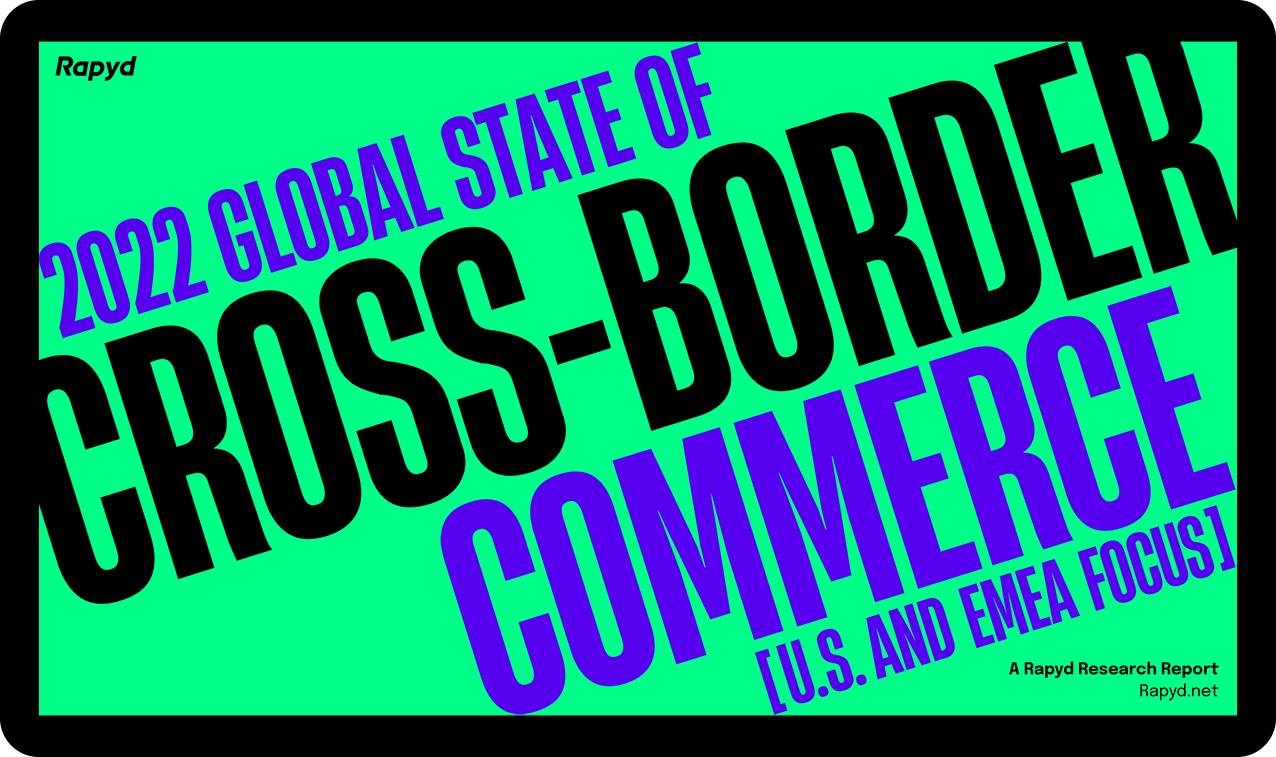Your guide to capitalizing on the growing Latin American ecommerce market by offering local payment methods.
Accepting cross-border payments in Latin America means understanding the market, so merchants looking to trade in the region should ensure they approach it in the right way.
Latin America is a fast-growing ecommerce market. In fact, it was the region with the highest retail ecommerce sales growth in 2020, with a change of 36.7% compared to worldwide growth of 27.6% (eMarketer).
While bank account penetration is still relatively low, smartphone penetration is on the rise, and the in-person shopping limitations caused by COVID-19 have helped boost local consumers’ interest in online shopping.
What Are The Top Payment Methods in Latin America?
Table of Contents
- What Are The Top Payment Methods in Latin America?
- Argentina Payment Methods
- Brazil Payment Methods
- Chile Payment Methods
- THE GLOBAL STATE OF CROSS-BORDER COMMERCE
- Colombia Payment Methods
- Mexico Payment Methods
- Peru Payment Methods
- Capitalize on Latin America’s Fast-Growing Market
- The Easiest Way to Accept Hundreds of Payment Methods Across Latin America
With an estimated 200 million unbanked individuals in the region, it’s important to understand local payment methods, offer other ways for your Latin American customers to pay and consider appropriate ways to build loyalty in your customer base. Brazil and Mexico continue to lead in ecommerce spending, with Brazil making up 32.5% of the market and Mexico accounting for 28.8%. (Statista) Other countries in the region are worth watching, however, as their local ecommerce markets develop.
Here are the preferred payment methods in Latin America, by country:
Argentina Payment Methods
Despite being the second-largest economy in Latin America, Argentina sits around the middle in terms of bank account penetration, with around half of the population having a bank account and only about a quarter using credit cards.
- Cash – Cash payment options like PagoFacil and RapiPago are the most popular online payment methods in Argentina.
- Credit cards – Next is credit card payments, with global brands Visa and MasterCard commonly used here.
- MercadoPago – Latin America’s leading online payment solution is popular in Argentina and many other Latin American countries.
Other popular online payment methods in Argentina include debit cards and ewallets.
Brazil Payment Methods
The opportunities for merchants in the Brazilian market can’t be ignored, but there are challenges in cross-border commerce thanks to the scale of the country, with technology and internet service inconsistent. Mobile commerce is an essential factor in the growth of the market, however, with 77% of rurally located Brazilians only using smartphones to access the internet. (JP Morgan)
- Credit cards – Both credit and debit cards appear in the top three preferred payment methods here. Local cards like Hipercard and Elo are more commonly used than international card brands.
- Cash – Cash by way of the Boleto Bancário is so common in Brazil that merchants looking to make cross-border sales here must offer it as a payment method.
- Debit cards – As with credit cards, local cards are used more often than international cards, so using a payment partner that understands payment processing in Latin America is key to success.
Other popular online payment methods in Brazil include ewallets and bank transfers.
Chile Payment Methods
Chile’s economy is a relatively stable one, and with 90% of the adult population having a mobile phone and 74% having a bank account, it’s a promising area for cross-border commerce (Rapyd)
- Local debit and credit cards – While international cards like Visa and Mastercard are used in Chile, local card providers such as Magna and Red Compra are very popular. Partnering with a local payment processor makes it easier for merchants to capture this market.
- eWallets – Both globally recognized ewallets like PayPal and local versions like ServiPag are popular online payment methods in Chile.
- Invoice/coupon payments – Despite having a comparatively high bank account penetration rate, paying cash via vouchers such as Sencillito and MultiCaja remain common here.
Colombia Payment Methods
By 2023, B2C ecommerce sales in Colombia are expected to increase more than 360% from the $3.33 billion generated in 2018, up to over $15.29 billion, so it’s worth understanding how Colombians prefer to pay. (Statista) There were 12 million ecommerce users in 2017, and 54% of the population make cross-border transactions. (Rapyd)
Debit and credit cards – Visa, MasterCard and Diners Club cards are all commonly used by Colombian online shoppers.
- eWallets – Such as Rappi, a local Colombian delivery app that lets users pay with credit card, cash or RappiPay, Rappi’s own digital wallet solution.
- Invoice/coupon payments – Like many of their Latin American neighbors, Colombian consumers regularly use Via Baloto, a voucher payment system, which lets them pay cash for online purchases.
Mexico Payment Methods
Despite having a relatively low bank account and smartphone penetration, the Mexican ecommerce market is one to watch. The COVID-19 pandemic caused an increase in online shopping among Mexican consumers, and online giants like Alibaba and Facebook are actively investing in the area. (JP Morgan)
- Cash – Cash for digital transactions are popular in Mexico, in part because only 37% of the population have bank accounts. (Rapyd) Consumers can pay for their online purchases at convenience stores.
- eWallets – Both international digital wallets, like PayPal, and more local options like Masterpass and Mercado Pago, are popular here.
- Debit and credit cards – Both are popular online payment methods in Mexico, with debit cards slightly ahead in terms of circulation per capita at 0.99 debit cards, compared to 0.19 credit cards. (JP Morgan)
Peru Payment Methods
Peru may be one of the smallest ecommerce markets in Latin America, but with a recent growth rate of 198%, merchants looking for global growth would do well to succeed in this relatively untapped market early. (Rapyd)
- Debit and credit cards – Both international and domestic credit and debit cards are used online in Peru.
- eWallets – PagoEfectivo is a local ewallet that lets consumers pay online using their existing online banking, or offline in cash.
- Invoice/coupon payments – SafetyPay and Mobiamo are two of the most popular online payment methods in Peru and allows users to pay cash for online purchasing.
Capitalize on Latin America’s Fast-Growing Market
While ecommerce may be fairly new and undeveloped in many of the Latin American countries compared to other countries and regions, they consist of young, smartphone-owning populations that are helping the ecommerce market to grow rapidly. This means merchants can get an early hold on the market, boosting their global reach, if they can offer the payment methods and easy customer experience that Latin American customers need.
Reach more customers by offering local digital payments in Latin America
The Easiest Way to Accept Hundreds of Payment Methods Across Latin America
Rapyd Collect is the world’s most comprehensive global payments platform. Grow globally by offering the right local payment methods with a single, simple integration.
- Accept cards, local payment methods, ewallets, bank transfers and cash
- Create customized payment experiences with Collect API
- Enjoy global fraud prevention for all payment methods
- Embed online payment processing into any website or application
Get started collecting payments online from billions of buyers worldwide.
Sources
eMarketer. “Latin America will be the fastest-growing retail ecommerce market this year.” emarketer.com, https://www.emarketer.com/content/latin-america-will-fastest-growing-retail-ecommerce-market-this-year.
JP Morgan. “2020 E-commerce Payments Trends Report: Brazil.” jpmorgan.com, https://www.jpmorgan.com/merchant-services/insights/reports/brazil-2020.
JP Morgan. “2020 E-commerce Payments Trends Report: Mexico.” jpmorgan.com, https://www.jpmorgan.com/merchant-services/insights/reports/mexico-2020.
Rapyd. LATAM Country Profile eBook. Rapyd, 2020, https://www.rapyd.net/resource/latin-america-trends-and-opportunities/. Statista. “B2C e-commerce sales in Colombia in from 2013 to 2023.”
Statista.com, https://www.statista.com/statistics/256241/annual-b2c-e-commerce-sales-in-colombia/.
Statista. “E-commerce in Latin America – statistics & facts.” statista.com, https://www.statista.com/topics/2453/e-commerce-in-latin-america/#dossierSummary__chapter5.
Subscribe Via Email
Thank You!
You’ve Been Subscribed.




